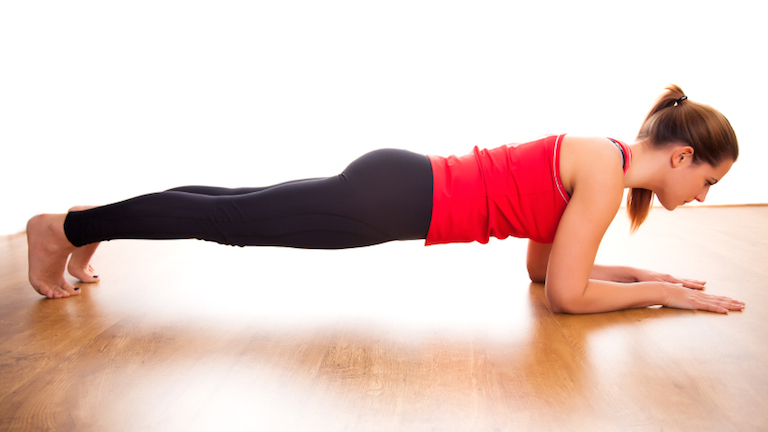A recent news story claimed plank exercises were bad for you – so are they? Our Fast Fitness blogger, personal trainer Kelly Du Buisson explains by not all planks are created equal and why you DO need them in your exercise life
There is always a lot of rubbish floating around in the news and one such article doing the rounds on the internet this week convinced me I had to write a response of sorts to those of you who may have read it. The article professed that Planks Challenges are actually bad for you. While I totally agree that these challenges are bad for you, planks themselves are not. Before everyone shuns planks to the ‘dangerous’ bin I want to make it clear what this article was actually referring to.
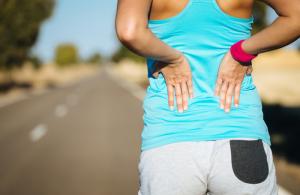
Now I am not disputing the idea that the journalist who wrote the article was injured through performing planks. However, it infuriates me that opinions such as this are broadcast to the general public whilst probably only telling you half of the story.
I have had at least three of my clients turn around and tell me that ‘apparently they should no longer do plank position’. Fitness has forever been plagued by myths and old wives tales but it is important to remember that just as a ‘calorie is not just a calorie’, ‘a plank is not just a plank’.
So I feel I need to set a few things straight. Firstly planks are a staple core exercise that involve stabilising the body whilst balancing on toes and elbows or wrists. The tailbone should be tucked under with navel to spine.
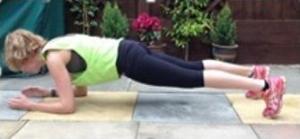
muscles firing
All major core muscles including the rectus abdominals, internal and external obliques, serratus anterior, TVA, deltoids and pecs as well as the hip flexor groups and muscles of the front of thighs are engaged when you do a plank. This makes it incredibly effective at building core strength.
just as a ‘calorie is not just a calorie’, ‘a plank is not just a plank’
Planks are an isometric exercise which means we balance in a controlled position instead of performing a range of motion and this places a healthy strain on the heart and lungs, encouraging them to grow stronger.
The article in question explained that through doing planks in a Pilates class the writer had experienced intense pain under her rib cage and up into her neck which was diagnosed as ‘costochondritis, an inflammation of the cartilage that joins the ribs to the breastbone’.
Now any exercise is bad for you if it is done wrong or if it is overdone. It seems the writer and sufferer had been attending Pilates classes where the plank was held as a challenge, often lasting to two minutes and beyond. The internet is simply overrun with plank challenges such as this and whilst it may seem like a really great way to push the body, I don’t think there is any benefit of being able to hold a plank this long.
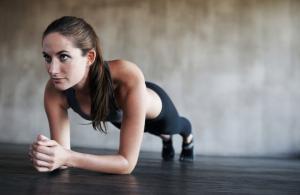
A simple plank should be held for a maximum of 30 seconds to one minute at the most. It may seem exciting to push beyond this point but the result is stress and strain on the body. Exercise breaks down muscle. It is rest and recovery that allow the inflammation to heal and thus the muscles to increase in strength and size. It’s common to work muscles to failure but it must be remembered that this is failure of form not strength. When holding a plank to failure; as soon as the back sags and the abdominals start to sink to the floor you are done. Once you are past this point the abs are no longer working but intense pressure is placed on the ribs and into the shoulders. You may still be able to hold the plank but you are no longer performing an effective exercise.
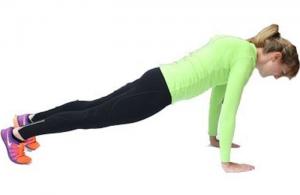
Therefore, it would be much more efficient to change the exercise rather than hold it for longer. Once you are capable of holding a basic plank between 30 seconds and one minute, try lifting onto the wrists and holding an extended plank. In my opinion, this places far less stress on the torso as it opens the chest as well.
Once you feel comfortable with this and again can continue with the correct technique try adding leg lifts or shoulder taps. Start to make the plank more dynamic. Adding movement will force the core muscles to stabilise as the body needs to be balanced to yield correct results. For instance, whilst tapping the opposite hand to the shoulder the hips need to keep still and the abdominals, internal and external obliques have to fight to keep the body weight from shifting from side to side.
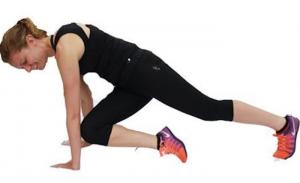
be static.
This is great for posture and control and will enable improvements in other exercises as well. Pilates movements should always be flowing and controlled so it is unlikely that you should be holding a static plank anyway in these classes, but it is also a favourite of conditioning classes where the rules are slightly different.
It is also important when holding static positions to breathe. I spend a lot of time in classes reminding people to breathe as the tension created by holding your breath often makes it easier to balance. However, when you hold your breath the lungs lift, the ribs flair and that pressure on the intercostal muscles is hugely increased. You will fail quicker, possibly ending in bad form. Not to mention blood pressure is raised, muscle strain is exceeded and often dizziness and nausea can occur.
Breathe deeply, fill the lungs. Especially in Pilates we practice lateral breathing, which allows the core muscles to remain tight whilst filling the lungs to capacity. Not only does this lower blood pressure but it also internally massages the muscles and the organs, allowing increased circulation and reduced inflammation of the muscles and joints.
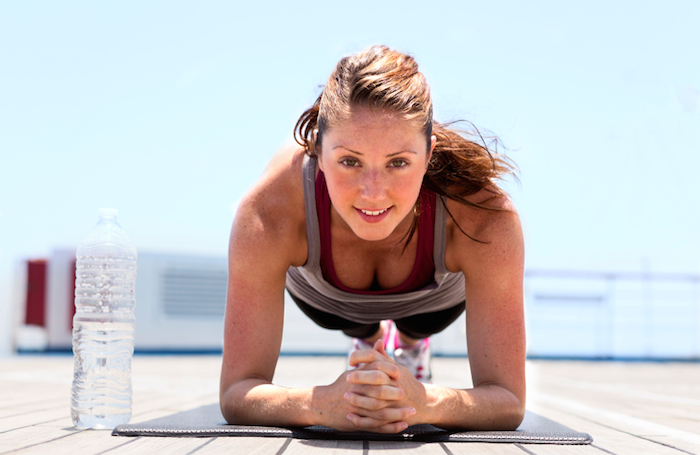
So in conclusion; the plank is a strong exercise that I highly recommend anyone to use for core strength and posture. However, as with any exercise there are dos and don’ts that need to be adhered to. If you are not sure you are performing the move correctly, ask a professional at your local gym or join a Pilates class. Never push yourself beyond what you feel comfortable doing. When performing Plank challenges remember there is no real benefit of holding a plank for longer than 1 minute. You will not improve strength by holding statically for too long. Testing that balance by adding dynamic movements will have more effect. In my view, a plank is an exercise not to be missed off your training plan. Before you all start worrying that you’re doing yourself some damage let me leave you with a few clichés…’Everything in moderation’, ‘everybody’s different’ and ‘don’t believe everything you read in the papers’ (Or at least seek a second opinion first.)
More Fast Fitness blogs by Kelly du Buisson

Click here The 7 Minute Workout: The Fastest Way To Shred Fat And Change Your Body Shape For Good to buy your copy of Kelly Du Buisson’s DVD.
Like this article? Sign up to our newsletter to get more articles like this delivered straight to your inbox.



